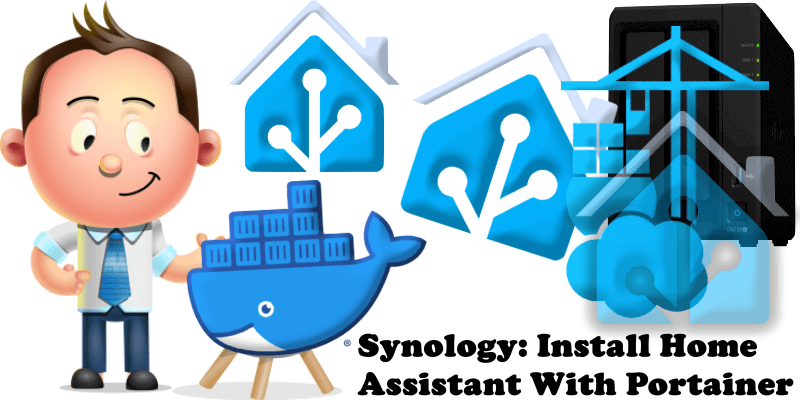
My previous guide for Home Assistant involved the use of Task Scheduler. Today I’m offering a recommended and excellent alternative for installing the latest Home Assistant version via Portainer. Home Assistant is free and open-source software for home automation designed to be a central control system for smart home devices with a focus on local control and privacy. In this step by step guide I will show you how to install Home Assistant on your Synology NAS using Docker & Portainer.
STEP 1
Please Support My work by Making a Donation.
STEP 2
Install Portainer using my step by step guide. If you already have Portainer installed on your Synology NAS, skip this STEP. Attention: Make sure you have installed the latest Portainer version.
STEP 3
Go to File Station and open the docker folder. Inside the docker folder, create one new folders and name it homeassistant. Follow the instructions in the image below.
Note: Be careful to enter only lowercase, not uppercase letters.
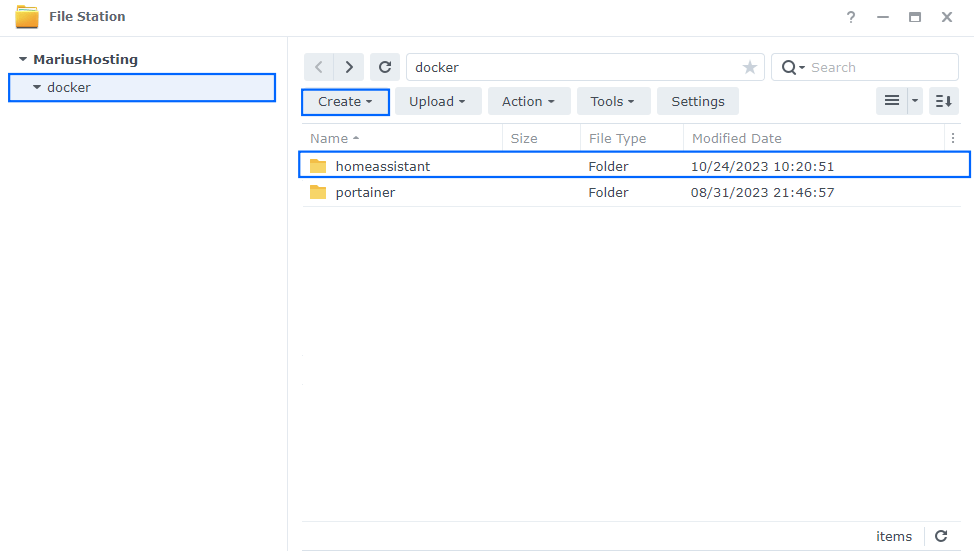
STEP 4
Log into Portainer using your username and password. On the left sidebar in Portainer, click on Home then Live connect. Follow the instructions in the image below.

On the left sidebar in Portainer, click on Stacks then + Add stack. Follow the instructions in the image below.

STEP 5
In the Name field type in homeassistant. Follow the instructions in the image below.
services:
homeassistant:
image: homeassistant/home-assistant
container_name: Home-Assistant
mem_limit: 8g
cpu_shares: 768
security_opt:
- no-new-privileges:true
healthcheck:
test: curl -f http://localhost:8123/ || exit 1
network_mode: host
volumes:
- /volume1/docker/homeassistant:/config:rw
environment:
TZ: Europe/Bucharest
restart: on-failure:5
Note: Before you paste the code above in the Web editor area below, change the value for TZ. (Select your current Time Zone from this list.)
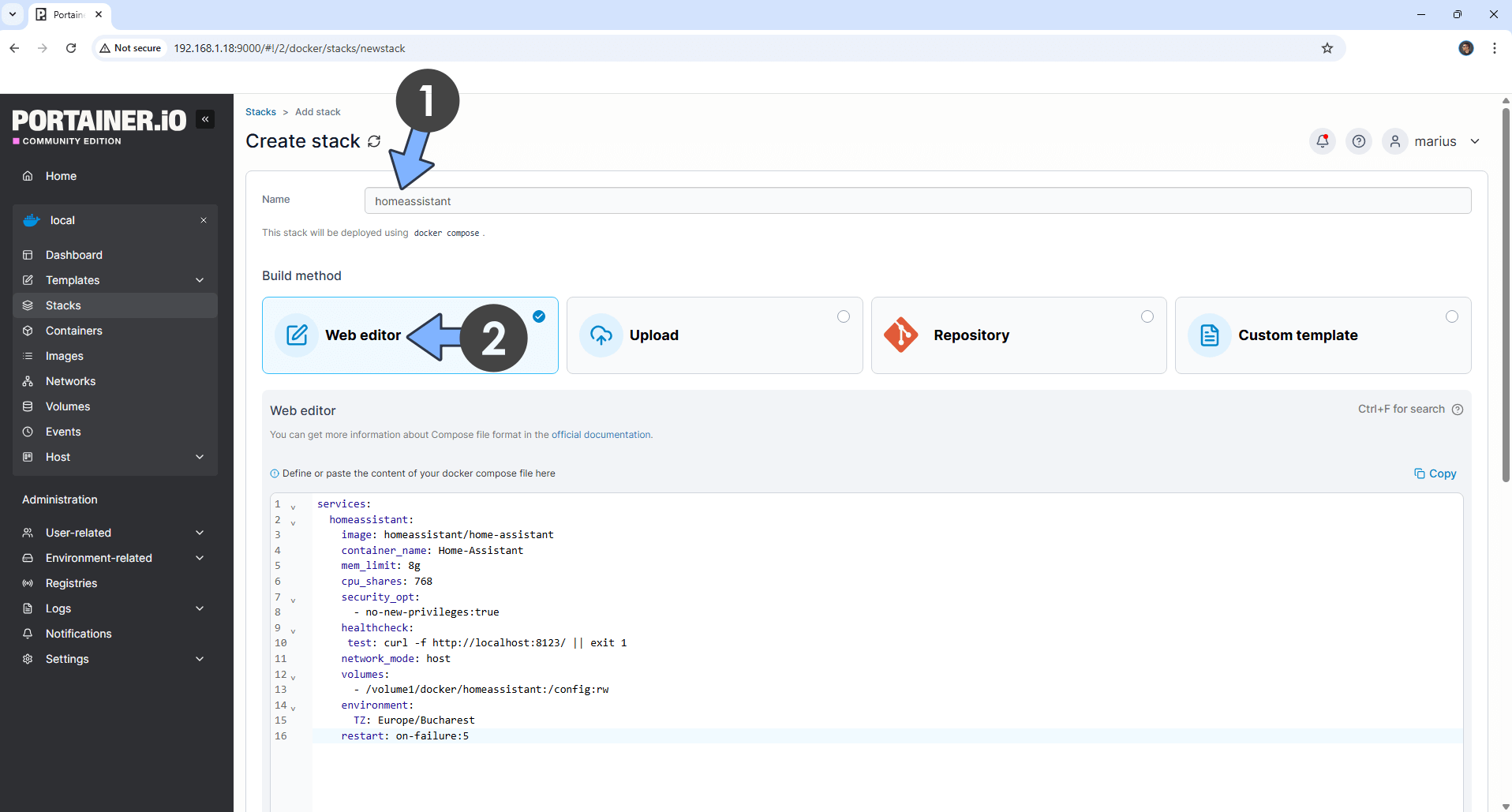
STEP 6
Scroll down on the page until you see a button named Deploy the stack. Click on it. Follow the instructions in the image below. The installation process can take up to a few minutes. It will depend on your Internet speed connection.
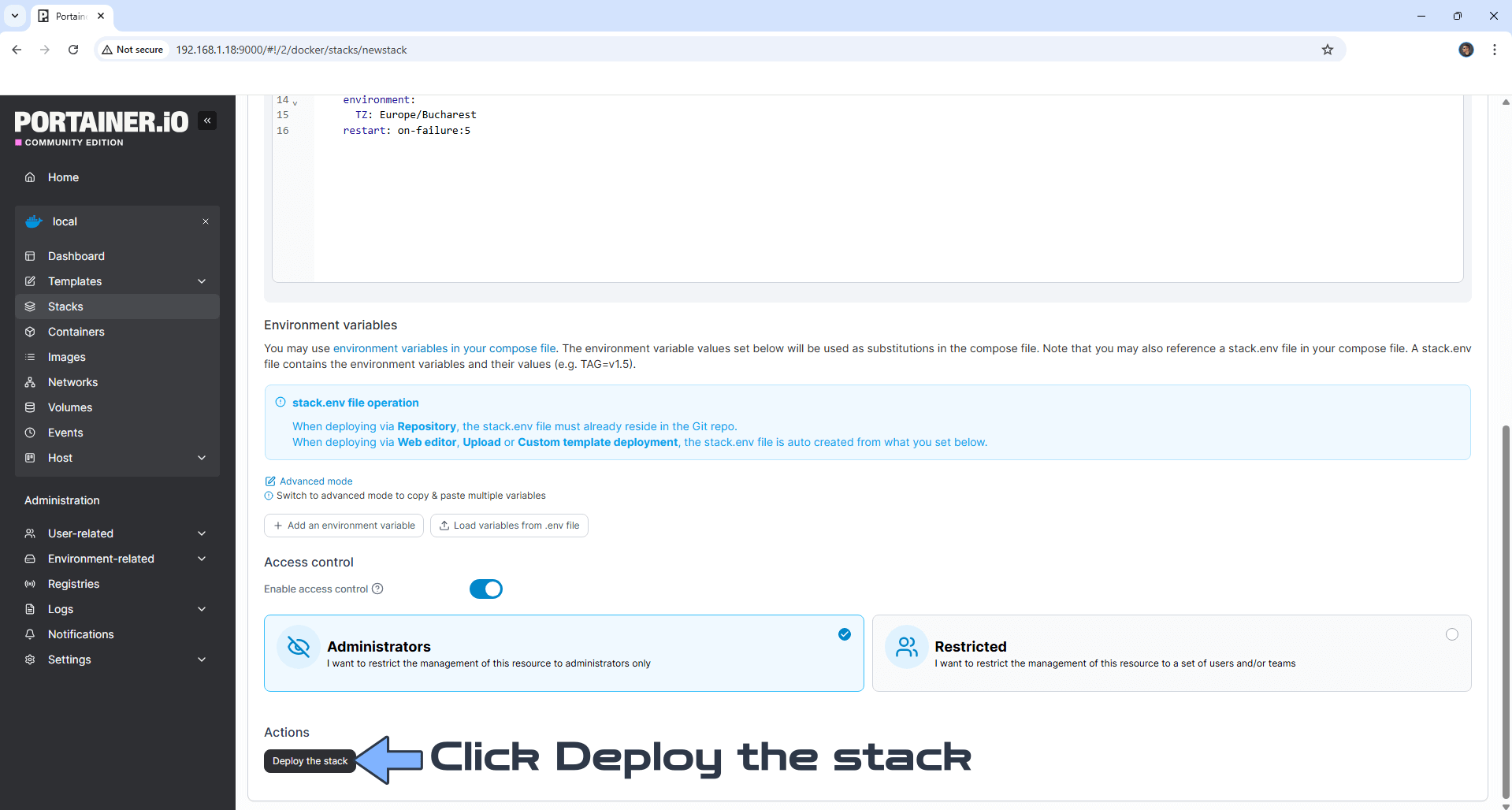
STEP 7
If everything goes right, you will see the following message at the top right of your screen: “Success Stack successfully deployed“.

STEP 8
🟢Please Support My work by Making a Donation. Almost 99,9% of the people that install something using my guides forget to support my work, or just ignore STEP 1. I’ve been very honest about this aspect of my work since the beginning: I don’t run any ADS, I don’t require subscriptions, paid or otherwise, I don’t collect IPs, emails, and I don’t have any referral links from Amazon or other merchants. I also don’t have any POP-UPs or COOKIES. I have repeatedly been told over the years how much I have contributed to the community. It’s something I love doing and have been honest about my passion since the beginning. But I also Need The Community to Support me Back to be able to continue doing this work.
STEP 9
The installation process can take up to a few seconds/minutes. It will depend on your Internet speed connection. Now open your browser and type in http://Synology-ip-address:8123 Click CREATE MY SMART HOME. Follow the instructions in the image below.
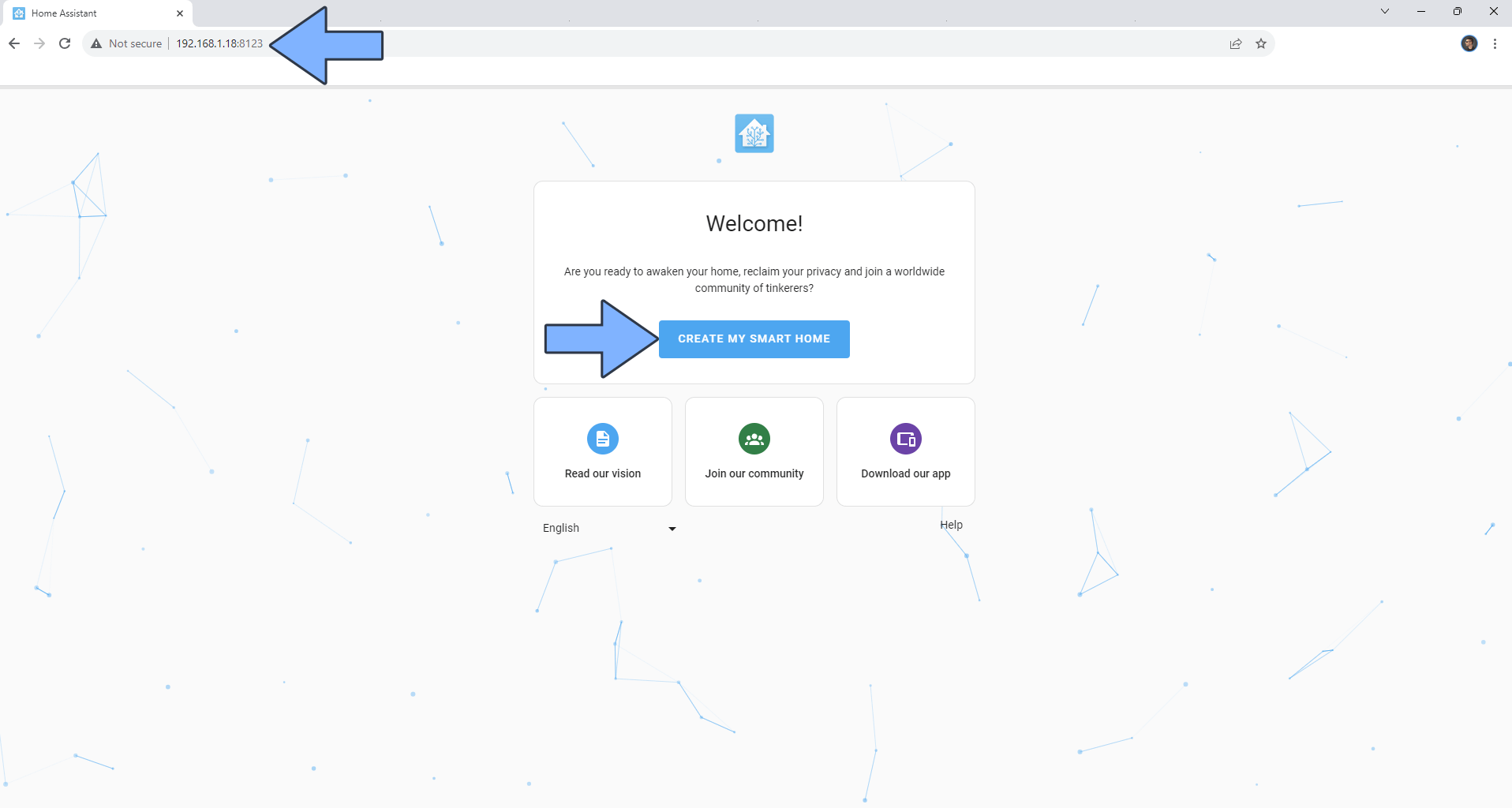
STEP 10
Choose Name, Username, Password and Confirm Password then click CREATE ACCOUNT. Follow the instructions in the image below.
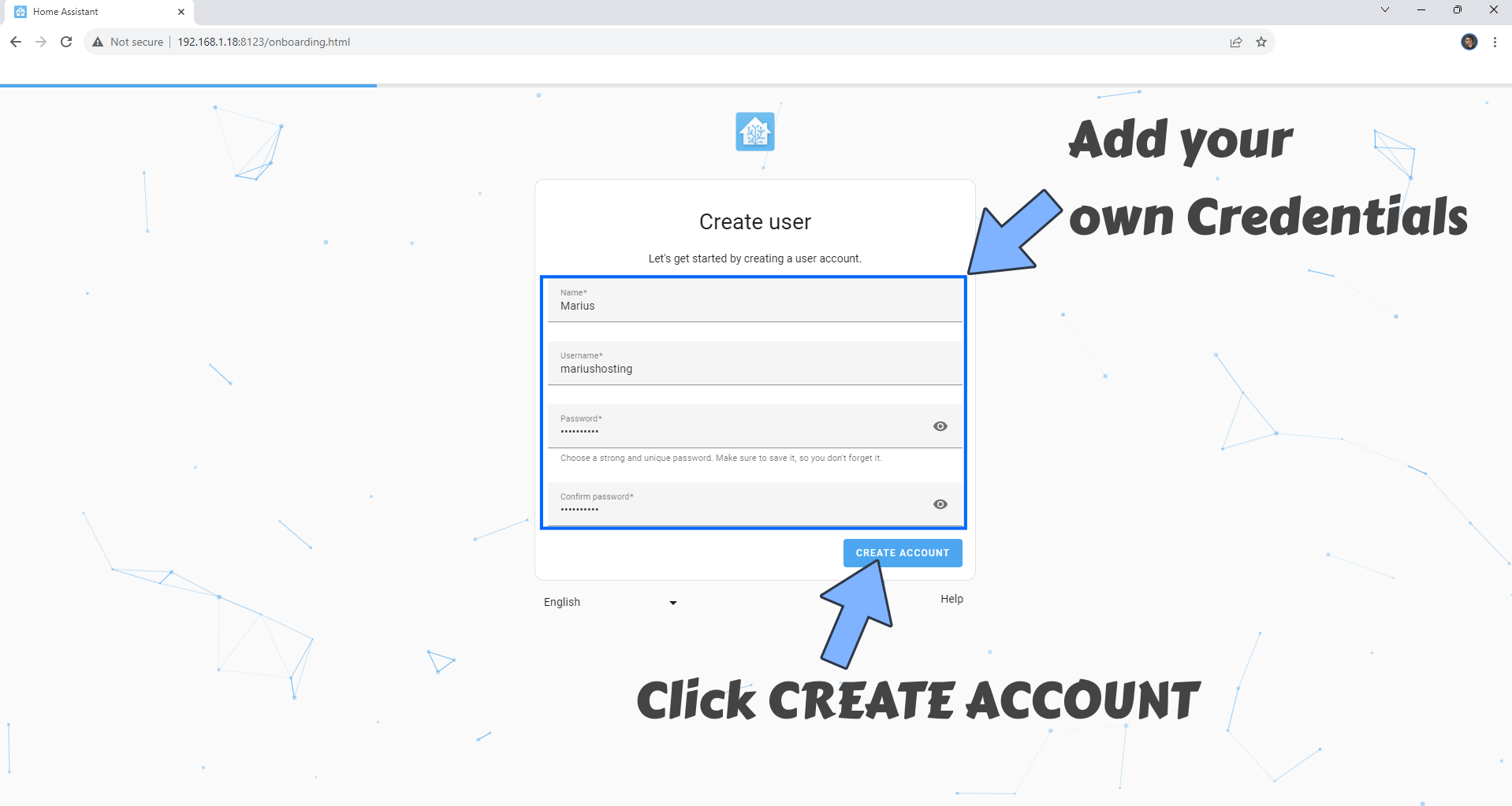
STEP 11
Click the DETECT Location icon. For a more accurate location, move your location point on the MAP. Click NEXT. Follow the instructions in the image below.
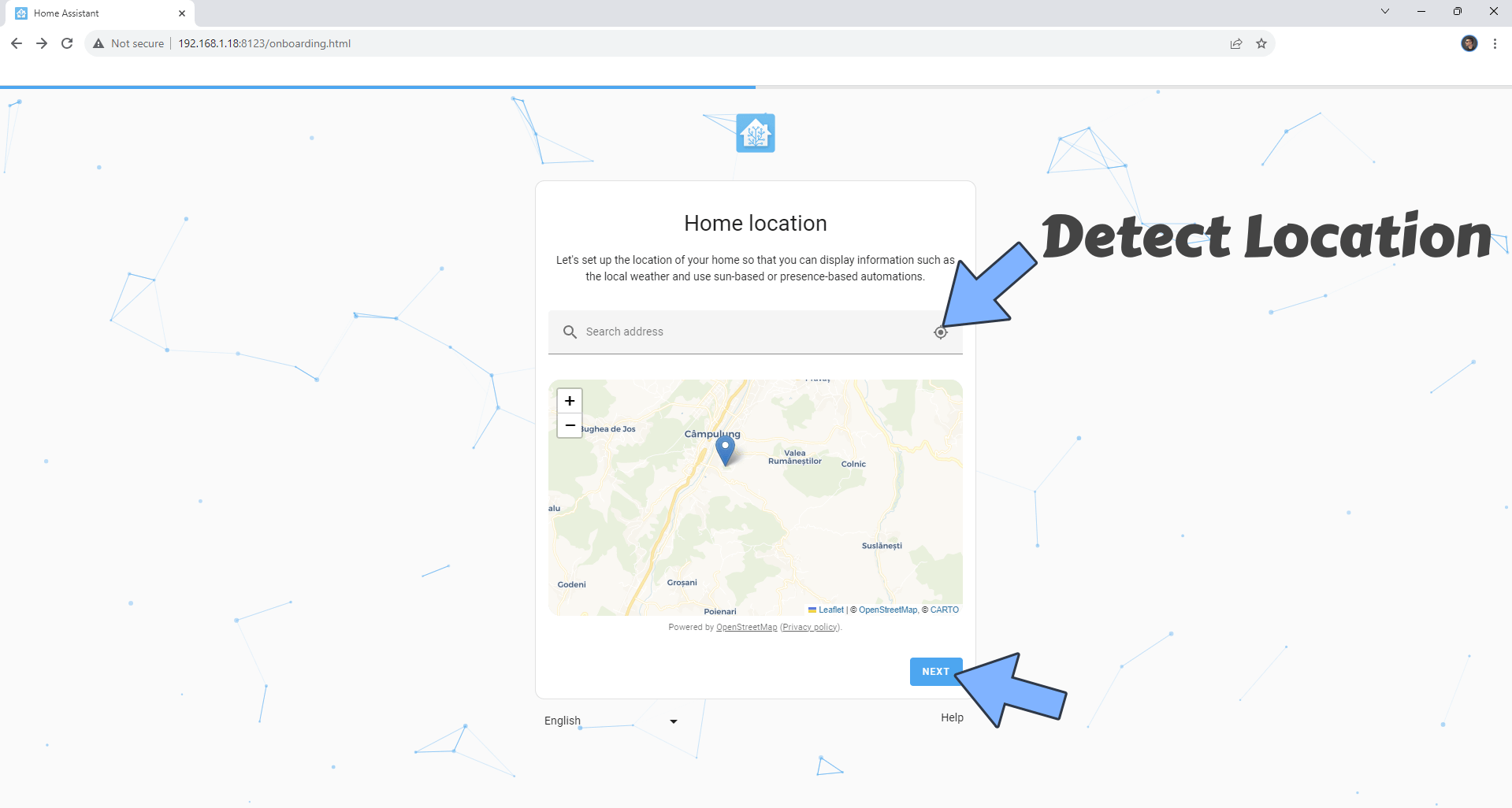
STEP 12
Choose to share or no anonymized information. Click NEXT. Follow the instructions in the image below.
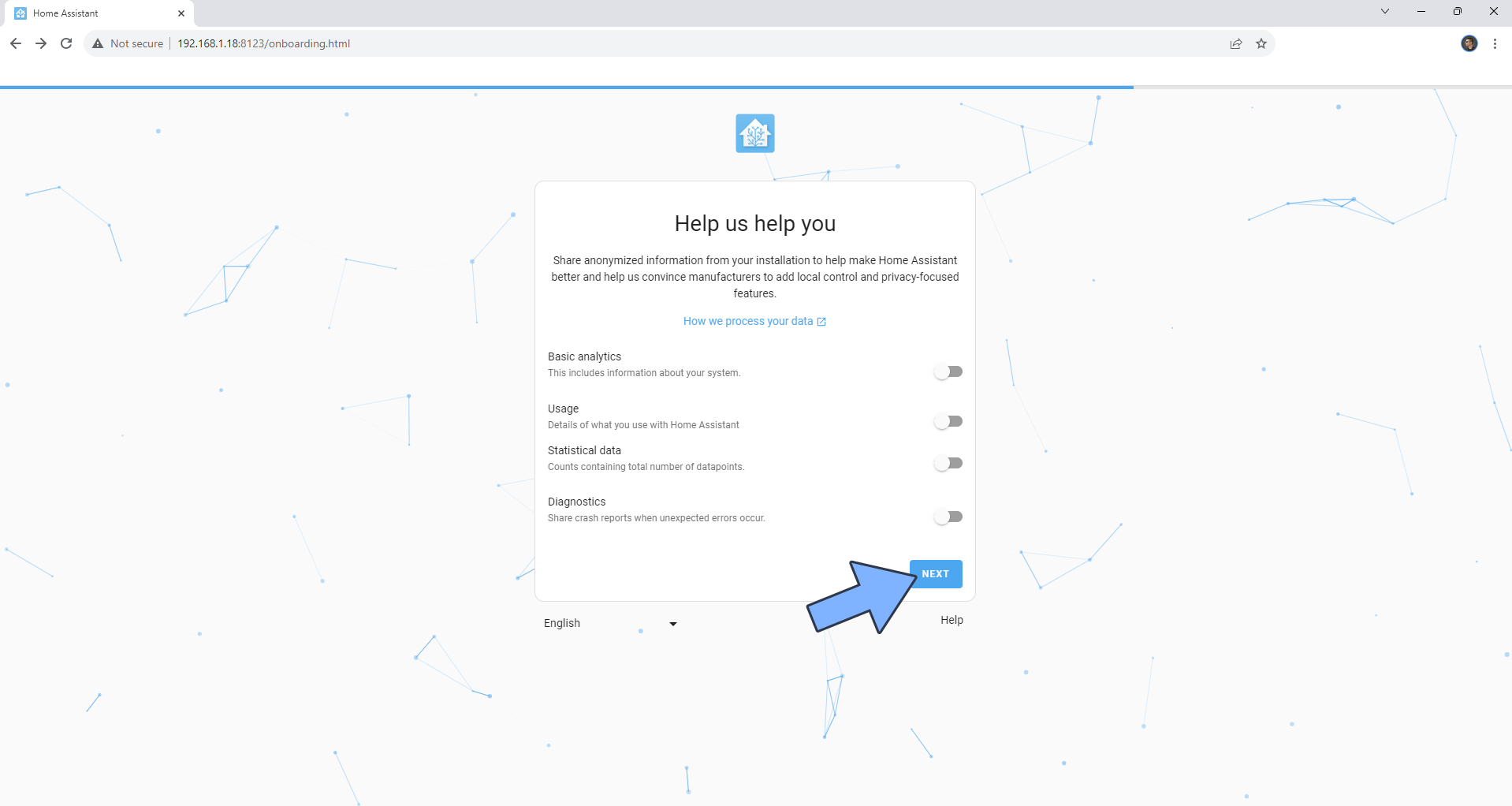
STEP 13
Click FINISH. Follow the instructions in the image below.

STEP 14
Welcome to your Home Assistant Dashboard!
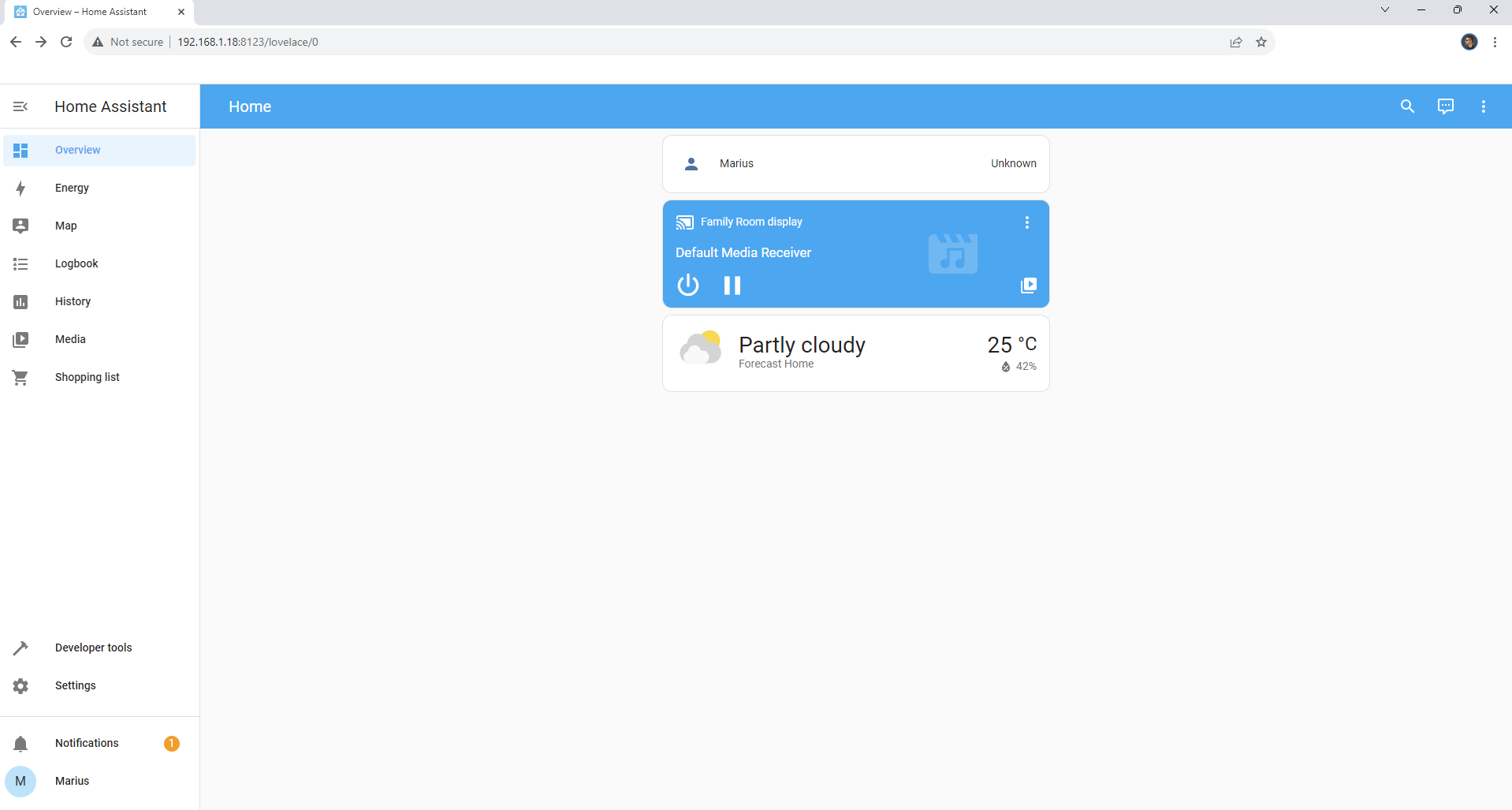
STEP 15
You can also use Dark Mode theme for your Home Assistant Dashboard!
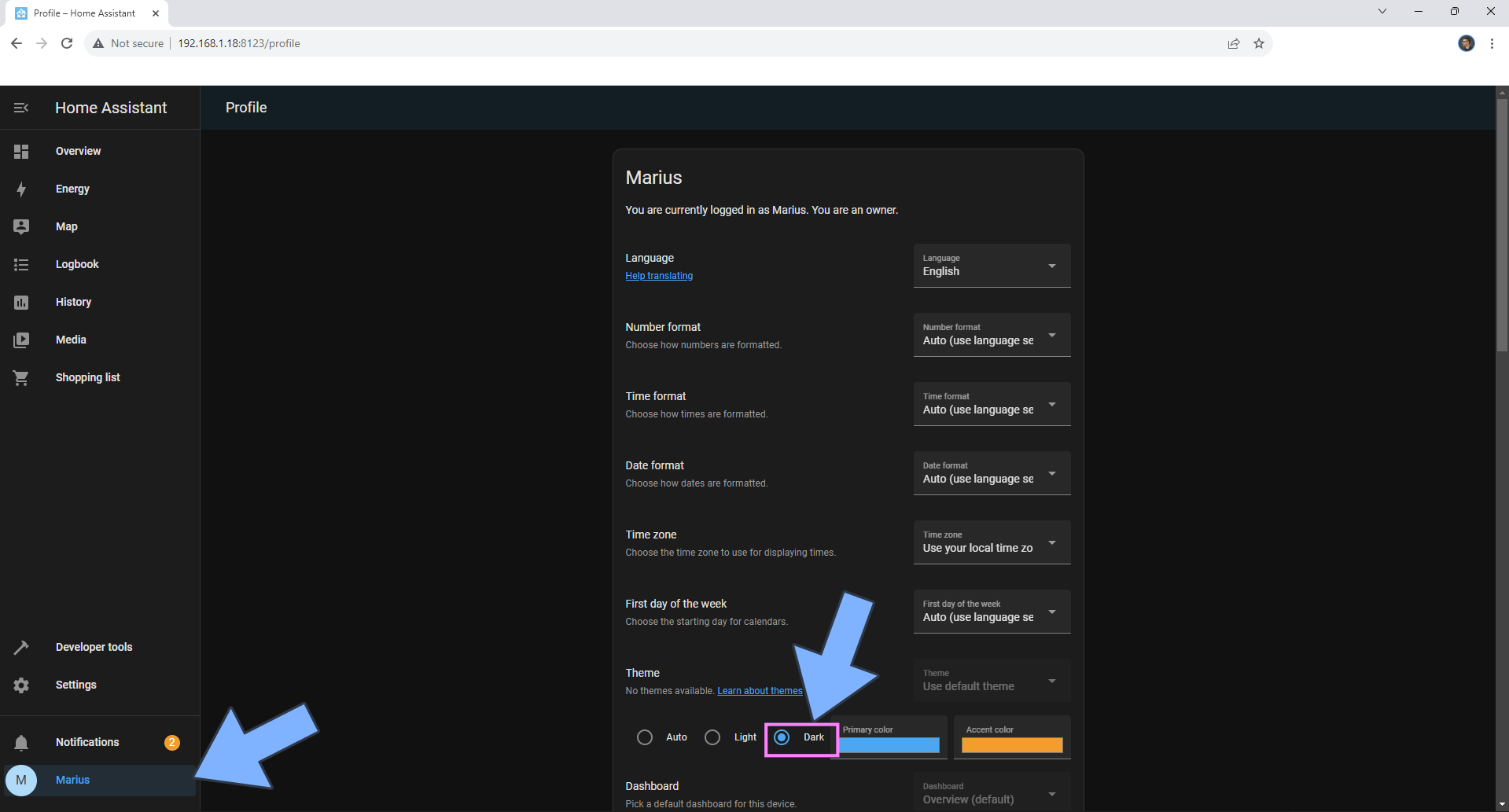
Enjoy Home Assistant!
If you encounter issues by using this container, make sure to check out the Common Docker issues article.
Note: If you want to run the Home Assistant container over HTTPS, check How to Run Docker Containers Over HTTPS. In order to make Home Assistant work via HTTPS, it’s mandatory to activate WebSocket.
Note: Read how to solve 400: Bad Request error.
Note: Can I run Docker on my Synology NAS? See the supported models.
Note: Find out how to update the Home Assistant container with the latest image.
Note: How to Free Disk Space on Your NAS if You Run Docker.
Note: How to Schedule Start & Stop For Docker Containers.
Note: How to Activate Email Notifications.
Note: How to Add Access Control Profile on Your NAS.
Note: How to Change Docker Containers Restart Policy.
Note: How to Use Docker Containers With VPN.
Note: Convert Docker Run Into Docker Compose.
Note: How to Clean Docker.
Note: How to Clean Docker Automatically.
Note: Best Practices When Using Docker and DDNS.
Note: Some Docker Containers Need WebSocket.
Note: Find out the Best NAS Models For Docker.
Note: Activate Gmail SMTP For Docker Containers.
This post was updated on Saturday / December 20th, 2025 at 12:35 AM
